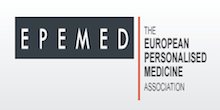Release of EPEMED OHE Study 2016
Value of Knowing and Knowing of Value: the need for an expanded value framework for complementary diagnostics.
Today EPEMED and The Office of Health Economics (OHE) launch their White Paper “The value of knowing and knowing the value: improving health technology assessment of complementary diagnostics”.
This work proposes a broader framework for considering the value contribution of complementary diagnostics and provides policy recommendations to support the implementation of this comprehensive framework for assessing their potential value contribution. This is important for improving health sector performance given the lack of attention in current applied health technology assessment (HTA) practices to measuring, among other things, the value of knowing (or the greater certainty of benefit) delivered by diagnostics.
There is a growing recognition that medical diagnostics are used in a wide range of clinically different applications as economic complements to other medical inputs, working synergistically to provide clinical benefit.
Consequently, the study is based on the new concept of “complementary diagnostics”, defining tests using biomarkers for the purposes of risk assessment, diagnosis, prognosis, monitoring, and guiding therapeutic decisions. This broad definition encompasses companion diagnostics and next-generation sequencing (NGS) as subsets of complementary diagnostics. FDA has recently begun to use the term complementary (versus companion) to refer to diagnostics that are not required but provide significant information about use of a drug. EPEMED and OHE believe that their new analysis broadens the use of the term beyond predicting response to specific medicines.
In addition, there is a growing appreciation that the traditional framework and metrics applied in the HTA of medicines and devices may overlook or undervalue important elements of value provided by diagnostics - in particular, value related to the diagnostic information itself.
Currently, economic assessment has become an important extension to clinical impact in assessing the performance evaluation of such technologies, which has tended to focus on the health gain. In contrast, broader societal value resulting from the improvement in availability of information due to complementary diagnostics is poorly studied and even less recognised and integrated as generating important elements of added value. Peter Kapitein, patient advocate and part of the EPEMED team, reminds that “personalised medicine is a strong new hope for patients, and the value of knowing contributes to a better quality of life for the patients and their loved ones”.
The White Paper also emphasises that the traditional cost-effectiveness analysis conducted as part of HTA focuses on three key elements - life years gained, improvements in quality of life, and cost-savings within the health care system - and sometimes adds two others – impacts on productivity and economic activity outside the health sector. These five elements are usually important to measure - or at least to consider - for most health technologies, but it is also important to assess the potential impact of five additional information-related elements: (1) reduction in uncertainty; (2) value of hope; (3) real option value; (4) insurance value; and (5) scientific spillovers.
These five information-related elements are not unique to complementary diagnostics and, indeed, by definition, apply to all complementary healthcare technologies having an informational aspect. These elements have been recognised in the literature but have not generally been taken into account in HTA, including reimbursement policy. Co-author Professor Lou Garrison of the University of Washington, who is a member of the OHE team, emphasises: “Based on a systematic review of relevant health economics literature, we have attempted to identify important informational aspects of complementary diagnostics and to integrate them in a more comprehensive value framework.” Ralph Riley, EPEMED leader of this initiative, adds: “this framework gives voice to the potential value of laboratory testing across the health continuum - with a special emphasis on the value of information to patients and caregivers - who may be overlooked in traditional value frameworks”.
These ten elements of value for complementary diagnostics are seen as largely independent and additive, and aggregable at a societal level. However, distinct elements could be measured with the same instrument. Any specific assessment of value must be careful to not double-count effects. Questions about the weighting, measurability, and commensurability of the elements raise important implementation issues, which are not fully addressed in this White Paper, but should provide a guide for future research.
Daniel Lesteven, EPEMED editorial committee co-leader, highlights the increasing role of complementary diagnostic tests in precision medicine: “The industry is deploying significant efforts to bring these tests to the market in a standardised form. This study highlights some of the key impacts that these tools can have on healthcare stakeholders”.
Dr Jorge Mestre-Ferrandiz of OHE, one of the co-authors of the White Paper, stresses the importance of incentives: “Incentives matter and thus reimbursement mechanisms are a critical driver of investment on healthcare technologies. We need to change the value framework for assessing complementary diagnostics; otherwise, important elements of value will not be rewarded”.
In producing this report, EPEMED and OHE hope to contribute to the scientific and policy discussion about the optimization of HTA criteria to provide a foundation for 21st century precision medicine by defining better the full range of benefits that need to be rewarded to encourage and support its appropriate development.
The white paper is available here
The White Paper builds on two reports, which can be found as separate Appendices:
“Complementary Diagnostics: A Literature Review on the Value of Knowing”, presents the findings of a systematic literature review which summarises different proposed value frameworks and specific valuations for complementary diagnostics.
“Landscape review of complementary diagnostics in Europe”, analyses the health economic evaluation of three complementary diagnostics presented by the HTA agencies of England (National Institute of Health and Care Excellence, NICE) and France (Haute Autorité de Santé;HAS), where available.




